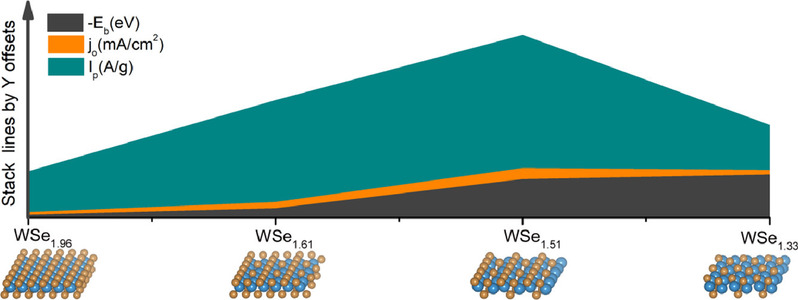
Research Article
Quantitatively Regulating Defects of 2D Tungsten Selenide to Enhance Catalytic Ability for Polysulfide Conversion in a Lithium Sulfur Battery
Hao-Jie Li , Kai Xi , Wei Wang , Sheng Liu , Guo-Ran Li* , Xue-Ping Gao
https://doi.org/10.1016/j.ensm.2021.11.024

Introducing defects into 2D materials can increase the coordinatively unsaturated sites that are usually also catalytically active sites. How does the level of defects influence catalytic performance and how to take advantage of defects to optimize the 2D materials? In this work, anionic Se vacancies and edge dislocations are regulated in 2D WSe2 as a model of transition metal dichalcogenide host material for the sulfur cathode. The defective 2D WSe2 with different W/Se ratios are quantitatively investigated the influence of the defects on enhancing the cathodic process in lithium sulfur (Li-S) batteries. With a moderate level of defects, WSe1.51 shows the optimal performance for adsorbing polysulfides, catalysing polysulfides conversion, and promoting liquid-solid transformation, all of which are crucial steps for Li-S battery. The corresponding sulfur cathode delivers a high initial areal capacity of 11.3 mAh cm −2, and excellent cycle stability with a decay rate of 0.025% during 1000 cycles at 1C rate. Even in a pouch cell, the excellent cyclability and flexibility are still available. The results show the feasibility of enhancing the catalytic ability of 2D transition metal dichalcogenide by controlling the level of defects by which a long-cycle and high-energy Li-S rechargeable battery can be achieved.



